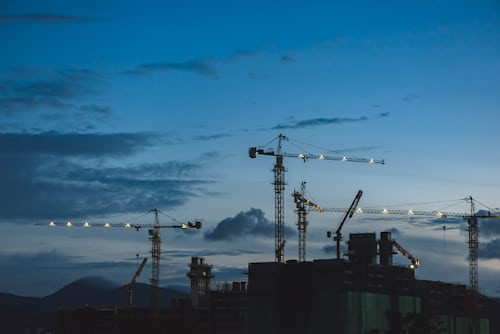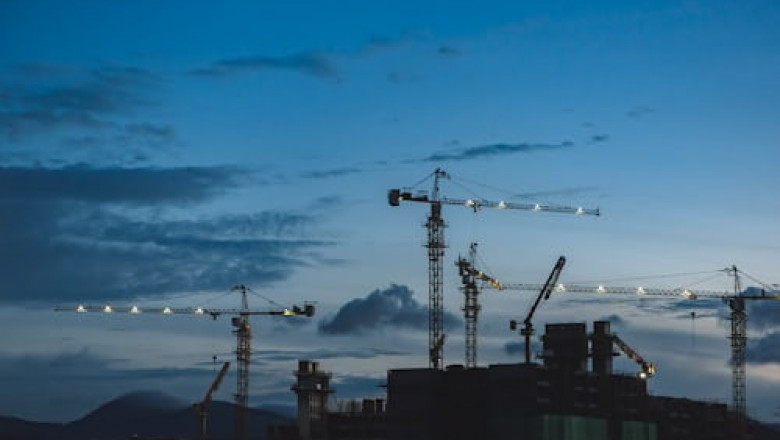views

In the modern construction industry, understanding the complete lifecycle of a project is essential for delivering successful outcomes. Whether working on a residential, commercial, or industrial build, the lifecycle provides a structured pathway that guides stakeholders from concept to completion. Without this clear roadmap, projects are at risk of mismanagement, scope creep, and costly delays. In this article, we’ll explore each major phase of the construction lifecycle and how proper planning and execution at every stage lead to efficiency and quality.
1. Conceptualization and Feasibility
Every construction journey begins with an idea. The conceptual phase involves identifying the purpose of the structure, site selection, zoning requirements, budget forecasts, and preliminary sketches. A feasibility study assesses whether the proposed project is achievable within the intended scope and constraints. This includes evaluating land conditions, accessibility, potential obstacles, and legal implications.
Stakeholders such as owners, architects, and engineers collaborate to align the concept with business goals, legal regulations, and financial viability. It's also the time when potential risks are identified and early cost estimates are drawn up to guide decision-making.
2. Design and Planning
Once a project is deemed feasible, the design phase kicks in. Architects and engineers develop detailed drawings and blueprints. These plans outline the structure's layout, systems (electrical, plumbing, HVAC), materials, and finishes. Planners will also create schedules, allocate resources, and draft a construction plan that maps each task to a timeline.
This is the stage where working with a professional estimating company for construction projects becomes invaluable. Accurate quantity takeoffs and budget projections help ensure that the design remains within financial constraints. Services like opening estimating and takeoff analysis contribute significantly to pre-construction accuracy, reducing the chance of costly revisions later on.
3. Pre-Construction and Procurement
After design approval and permitting, the project moves into pre-construction. This phase includes finalizing budgets, securing permits, assembling a project team (including general contractors and subcontractors), and developing a risk management plan.
Procurement involves sourcing and purchasing all the necessary materials, tools, and labor required for the job. This part of the process must be handled with precision to prevent delays. Contracts are signed, vendors are selected, and delivery schedules are aligned with the project timeline.
Thorough planning during this stage reduces the likelihood of change orders, delays, and budget overruns. Procurement professionals and estimators work closely to match material costs with estimated figures, ensuring financial alignment.
4. Construction Execution
Construction is where the tangible work begins. Ground is broken, and the structure rises in phases—foundation, framing, roofing, systems installation, and finishing. Communication and coordination are critical during this phase. Daily reporting, project tracking, and on-site inspections ensure compliance with design specs and building codes.
Project managers play a central role in maintaining schedule and budget. Safety is also a top priority, with teams ensuring all work complies with local and federal occupational safety standards.
Technology can streamline many aspects of construction execution. From project management software to drones and site sensors, modern tools enhance visibility and real-time decision-making.
5. Inspection and Handover
As construction nears completion, the project enters the inspection and testing phase. Inspectors review systems and structures to verify compliance with codes and standards. Any identified defects or issues are documented and corrected before final approval.
After inspections, a punch list is created to resolve outstanding work. Once all items are completed, the final handover takes place. Owners receive operation manuals, warranties, and final drawings. A successful handover also includes training for staff or facility managers who will oversee daily operations.
6. Post-Construction and Maintenance
Post-construction is often overlooked, but it's just as important. It involves ongoing maintenance, performance assessments, and potential upgrades. Facility management begins here—ensuring that systems continue to function efficiently and that the building performs as intended.
Some projects include long-term service contracts for maintenance, especially in commercial or high-tech builds. Asset management software can help track wear and tear, optimize energy use, and monitor system performance over time.
Why Lifecycle Understanding Matters
Recognizing each phase of the construction lifecycle helps stakeholders navigate complex projects with confidence. It enables proactive planning, risk mitigation, and clear communication between teams. More importantly, it ensures that the final product is safe, functional, and cost-effective.
Ignoring or poorly executing even one phase can lead to ripple effects throughout the project. Whether you're an owner, estimator, contractor, or architect, understanding these lifecycle stages ensures your work aligns with broader project goals.
The Role of Accurate Estimating Throughout
While each stage has its own focus, cost control remains a consistent priority. That's where expert estimators come into play. Services like professional estimating construction companies for full-scope help keep every phase financially on track. They support decision-making, guide material procurement, and ensure realistic project forecasting.
Similarly, specialized services like openings takeoff and estimation services help avoid overspending and under-ordering. These services support architects and contractors in developing plans that are both design-rich and economically feasible.
Conclusion
The construction lifecycle is a structured roadmap that guides projects from idea to operation. By understanding and respecting each phase—from conceptualization to post-construction—teams can improve efficiency, lower costs, and enhance results. Integrating estimation and project management services at every step further ensures long-term success.






















Comments
0 comment